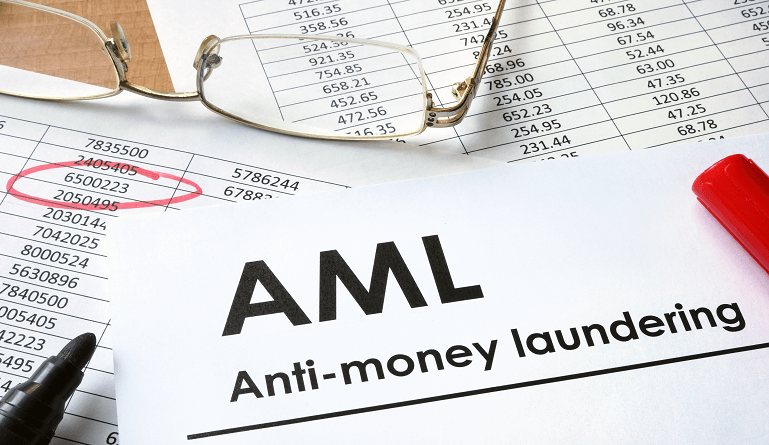Fintech investment continues to increase, reflecting investors’ trust in the financial services industry’s capacity for creativity, efficiency, and its ability to stay competitive. However, instances of money laundering or other forms of financial misconduct are on the rise. While complete information may be unavailable at this time, financial firms spent a purported $214 billion on financial-crime monitoring in 2020.
How well does the sector embrace the need to construct systems that address the challenges of growing financial regulations and the rise of money laundering and fraud? And, with the hyper-connected nature of fintech, how do we secure these systems while retaining the convenience and profitability factor?
Understanding the Anti Money Laundering (AML) Challenge in FinTech
The hyper-digitalization engulfing the financial services industry is a double-edged sword for most fintech industry players.
Digital initiatives have created significant new opportunities on the one hand. At the same time, it is becoming more challenging to identify financial crime risks as sophisticated cybercriminals utilize technology to their benefit.
This has produced a situation in which AML measures are in the spotlight. Fintechs must modify their control frameworks to control the evolving risks of financial crime, while always facilitating enterprise digital transformation. Moreover, they must guarantee positive customer experiences throughout the transformation process.
Why Are FinTechs at Risk?
Just after the financial meltdown of 2008, regulators enacted anti-money laundering laws to safeguard financial institutions and consumers. Fintechs, like other providers of financial services, are susceptible to serious offenses like money laundering if they do not conform to these regulations. Therefore, regulators have the authority to impose severe punishments, including fines or disciplinary action.
Money laundering in fintech is tempting for criminals because of the surge of transactions in such systems, the limitless flow of funds, and the use of anonymized accounts (e.g., PayPal). With the boost in the circulation of digital currencies, criminals can continue money laundering in this new path.
The result is that digital anti-money laundering (transaction laundering) has already begun to replace conventional anti-money laundering. These elements make fintech a prime target for illicit organizations engaged in money laundering.
Given the nascent nature of the fintech industry, money laundering results in significant reputational damage, which has undesirable consequences. On the other hand, it is crucial to note that conventional means may not be sufficient for fintech companies, as they deal with great risk exposure and more threat vectors due to their digital operations.
The State of Money Laundering Excerbates the AML Challenge
The mounting threat posed by financial crime has heightened regulatory focus. The UN Office on Drugs and Crime reports that it is extremely difficult to estimate the exact value of money laundering, but emphasizes that the quantities are immense and rising, reaching up to 5% of the global GDP, or $800 billion to $2 trillion yearly.
Those who engage in illegal and unlawful activities, such as drug trafficking, tax evasion, laundering, and financial fraud, are progressively utilizing digital payment channels, increasing the likelihood of money laundering.
Payment service providers (PSPs) and fintechs cannot presume that comparable criteria will not be applicable to other providers operating in these areas. Also, it cannot be presumed that only organizations will bear the burden of financial crime compliance.
For instance, the Financial Crime Enforcement Network (FinCEN) and the Federal Deposit Insurance Corporation (FDIC) have released guidance to assist financial institutions in identifying the increased risk posed by PSPs. As a consequence, U.S. financial institutions expect PSPs within their network to have robust AML, penalties, and antifraud controls.
These controls encompass merchant due diligence, surveillance for suspicious activity, and other processes (like risk evaluation) to guarantee that fintechs do not unwittingly increase the risk to financial institutions and consumers.
What Does an AML Program in FinTech Look Like?
Under current regulations, an AML program must have a few essential elements to be considered as compliant. These include ongoing training, a compliance officer, transaction monitoring, suspicious activity reporting (SAR), and sanctions screening.
- A compliance officer is an experienced fintech employee responsible for supervising AML compliance on a daily basis.
- Along with onboarding training, fintech companies must provide ongoing training on AML regulatory standards, including the most recent legislative updates.
- Further, institutions are required to monitor transactions of $10,000 or more; financial institutions should also search for suspicious transaction patterns.
- Suspicious activities include transactions from dubious offshore accounts as well as others that may obfuscate the origin of illicit funds.
- Additionally, financial institutions must screen their customers to ensure they are not on any sanctions lists.
- Companies are required to submit SARs to the Financial Crimes Enforcement Network (FinCEN) no more than thirty calendar days after discovering an irregularity in order to maintain compliance with AML regulations in the United States.
- As a result, fintechs must generally level up their compliance reporting capabilities.
3 Ways FinTechs Can Take a Proactive Stance on Anti Monel Laundering
Fintech firms need to take the following steps to strengthen their AML capabilities:
1. Revisit your Know Your Customers (KYC) measures and follow the best practices
Before partaking in financial transactions with new clients, financial institutions must confirm their identities. Given their goal of offering a smooth and seamless experience for new consumers, it can be challenging for fintechs to accomplish this. To combat money laundering, however, fintech companies must implement more stringent customer enrollment protocols.
For instance, you can utilize “on-the-spot” photographs to compare with the photographs on their IDs. After onboarding, fintech firms should implement a robust authentication method, like biometric verification, to guarantee that the person logging/signing in is the same individual who was onboarded.
2. Leverage adverse media screening and specialized trust solutions for customer due diligence (CDD)
CDD is a series of risk management strategies for continuous monitoring of consumer activity employed by financial institutions, such as fintechs. This means you must verify not only the identity of your customers, but also the authenticity of majority shareholders with a shareholding of at least 25% in any company seeking to establish an account.
While enrolling new consumers, Fintech companies must strengthen their CDD processes and implement their own risk profiles. This process should classify politically exposed persons (PEPs), clients from specific regions, and customers in specific industries as higher risk than other patrons. Therefore, negative press or other worrisome news screening and filtering is a service that enables you to look for negative media about an individual or business, helping you create more accurate risk profiles.
3. Automate the transaction monitoring system
Thanks to software that automates the monitoring of transactions, fintech companies can generate a variety of monitoring criteria, which are then applied to each transaction. The transaction’s notifications and severity levels are determined by the circumstances and the guidelines. You can examine these transaction alerts in real-time on a dashboard and respond swiftly when tackling suspicious activity.
Importantly, fintechs should employ a risk-based strategy that concentrates on intrinsic business threats. This is dependent on your understanding of the categories of consumers you interact with, the field of practice, and the prevalent hazards in the nations in which your business operates. By monitoring transactions from a risk-based perspective, there are fewer chances of false negatives.
To Meet AML Challenges, FinTechs Must be in it for the Long Haul
Initial implementation of more rigorous AML measures may result in a decrease in consumer conversion rates for fintech companies. For example, clients will demand more effort and time to finish the onboarding process. Owing to the necessary authentication layers, these AML safeguards can also impede transaction velocity. False-positive AML notifications can infuriate consumers, and international transactions will become far more complex.
However, fintech firms can leverage their existing digital infrastructure to build resilient and compliant AML systems. The key is to leverage cutting-edge technologies like AI/ML to reduce bottlenecks and false positives as much as possible, while keeping your risk exposure to the bare minimum.
For more insights on AML and fraud in fintech, read about the top crypto scams targeting businesses in 2023 and how to prevent them.





